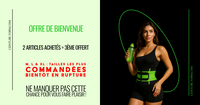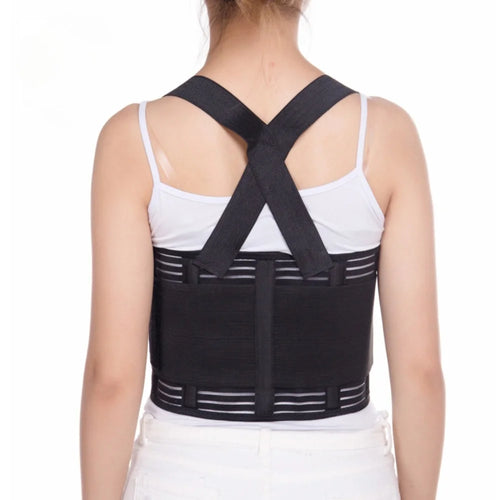Orthosis • Thoracic Belt
Women's Chest Belt
Women's Chest Belt: Unparalleled Comfort and Support for Your Well-being Why choose this product Optimal comfort all day long : Thanks to its lightweight and...
The chest belt is a medical device often used to provide support to the rib cage following injuries or trauma. Whether you are a man or a woman, this accessory can play a crucial role in the healing process after rib fractures or other conditions affecting the sternum.
Usefulness of the chest belt
Support after a rib fracture
Rib fractures are common conditions that can cause severe pain and take several weeks to fully heal. The rib belt helps stabilize fractured ribs, reducing mobility and reducing pain during recovery.
Post-operative protection
After a surgery involving the sternum or rib cage, additional protection is often necessary. By using a chest belt, adequate support can be provided to vulnerable areas, minimizing the risk of post-operative complications.
Pain reduction
In addition to supporting physical trauma, the chest belt also helps reduce pain by limiting movements that can exacerbate existing injuries. This is especially helpful for people with chronic pain at chest level.
Features of the chest belt
Materials used
Chest belts are made from a variety of materials such as cotton , the polyester and some synthetic fiber blends . These are chosen for their ability to provide comfort and durability.
Adjustability
One of the main features of chest belts is that they are adjustable . They often feature Velcro straps that allow the tension and fit to be adjusted to suit the individual needs of the wearer, whether male or female.
- Cotton: Soft and comfortable but may shrink in the wash.
- Polyester: Durable and tear resistant.
- Synthetic fiber blends: Offer a good balance between comfort and durability.
Specific benefits for men and women
For men
In men, physical builds sometimes differ based on muscle mass and chest width. Chest belts designed specifically for them take these differences into account, providing a tighter fit and increased support.
For women
Women often need a different design for obvious anatomical reasons. Women's versions of the chest belt take into consideration the contour of the breasts and provide support without excessively compressing this sensitive area.
Conditions treated by the chest belt
Direct trauma
THE Car accidents , serious falls, and impacts during sports activities can cause direct trauma to the rib cage. A chest belt is then extremely valuable in limiting pain and promoting rapid healing.
Chronic medical conditions
Conditions such as the Costochondritis , which causes inflammation of the rib cartilage, may benefit from the support provided by a chest belt. It helps limit painful movements and generally improves patients' daily comfort.
How to choose a chest belt
Selection criteria
Choosing the right chest belt mainly depends on a few essential criteria:
- Size : Make sure the belt is the right size to give you the best possible support.
- Material : Choose a material that does not cause skin irritation and is comfortable to wear for long periods of time.
- Adjustability : A good belt should be easily adjustable to allow maximum flexibility.
Popular brands and models
There are several reputable brands offering quality chest belts. Each offers distinctive features to suit different needs and budgets.
Tips for using the chest belt effectively
Periods of use
Wear the chest belt as often as recommended by your doctor, especially during periods of physical activity. Avoid wearing it while sleeping unless specifically advised.
Maintenance and cleaning
Clean your chest strap regularly to avoid irritation from accumulated sweat and dirt. Most belts can be hand washed with mild soap.
Medical monitoring
Always follow your healthcare professional's advice regarding the use and duration of wearing the chest belt. Regular check-ups will help monitor the progress of healing and make adjustments if necessary.






